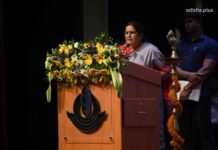by Prof Ujjwal K Chowdhury

Part 1:
Economy in every developing nation is changing in its employer-employee relations much on the lines of what already has been happening in the developed world, but with local nuances. India is no exception. The decline of the traditional concept of labour, the rise of contractual work and vendor dependence, the advent of gig economy in the knowledge and creative sectors, the expansion of shared economy in various sectors and the like are the symptoms of this changing economy and its employer-employee relations.
Alongside, the spectre of artificial intelligence replacing human labour in most repetitive work, in cases of mass production, and in most work where there is a precedence or earlier template to perform, coupled with machine learning to replicate and pre-empt production, is another major emerging aspect which will change of the nature of future work like never before even in economies which are yet not fully developed but reasonably large, like India. So with automation on one end and fintech and block-chain on the other: the future of work will not resemble anything in 2000 AD by 2025 AD. The world of work is changing for ever ahead.
The first industrial revolution focused on mechanization, steam and water power, and led to an exodus of rural landless labour to urban industrial sites calling for a huge working class with long hours on machines. The second industrial revolution evolved mass production with the invention and use of electricity. It led to better working conditions, higher skills in labour, and an organized working class across the world. Working class movement evolved in this scenario rapidly bringing in order and rights of the workers.

Third industrial revolution marked a major difference with the birth of information technology, electronics and IT enabled automation. The need for further skilled labour, in IT and electronic domains, became paramount. White collar labour rose in quantity and quality and work terms became flexible as well.
Now we are at the threshold of the fourth industrial revolution, which has already matured in advanced economies of the West. This revolution is bringing to the forefront artificial intelligence replacing human endeavour in many sectors, Internet of Things connecting devices and empowering their users like never before, cloud technology calling for total paperless digitization with dependence of internet also reducing, and machine learning predicting human behaviour, habits and needs as well. This phase calls for a different type of work and work-force altogether, and hence a completely different type of education unseen and unknown till 2000 or even later. Unfortunately, we in India, are still not aware or clear about these and we are still using twentieth century syllabi and teaching methods for twenty first century learners learning for an uncertain economy post 2025.
Five Trends Shaping Future of Work:
Jacob Morgan in ‘The Future of Work’ says that the five trends shaping the future of work are the new behaviours (shaped by the social media and the web), technologies (shift to the cloud collaborative technologies, Big Data and Internet of Things), the Millennial Work-force (new attitudes, expectations and ways of working), higher mobility (work anywhere, anytime, and on any device), and globalization (work with no boundaries).
Essentially we are today much more comfortable living a public, collaborative and connected life where we can connect and engage with people and information however we want. These new behaviours are also entering our organizations and giving rise to new collaborative platforms for business. We are all very used to legacy intranets, emails, CRM systems, billing and invoicing solutions, time-tracking technologies, etc.
The new Millennial Work-force is already close to half of the work-force in major nations of the world and will be the majority beyond 2020. This is a generation that is starting to greatly question the value of universities, is more concerned about sustainability, and has the ability to learn and teach at will. They are growing up with social and collaborative technologies and are used to sharing and connecting, living a more public and engaged life.

World Bank’s End Poverty Project:
Focus of the economy and its planning also determines the future of work. For example, the World Bank in its End Poverty project has talked about three ways the developing countries can prepare themselves for the fourth industrial revolution: by developing (i) competitiveness, (ii) capabilities and (iii) connectedness. Competitiveness can increase by enabling new business models, lowering down costs, and creating a solid business environment. Capabilities will increase by training the workers in new skills, building stronger firms, and developing digital readiness across board. Connectedness will enhance through improved logistics, reduced trade restrictions and encouraged trading in services.
Various developing nations are emerging in specific sectors and applying the WB recipe as outlined above. For example, Ethiopia is an emerging hub for textiles and garments, attracted $ 1.2 billion investment a year ago from China in the garments industry, and is becoming a sourcing destination for European clothing majors like H&M. Brazil excelled in food procession, wood and paper products in the first decade of this century, becoming the 5th largest exporter of processed food and 9th largest exporter of paper products by 2011. Today, food, paper and wood products exports of Brazil have crossed USD 50 billion last year. Capabilities were built over two decades using the suggestions given above. The Philippines has become a major hub of call centres. It increased employment in offshore services from just 100,000 in 2004 to above 1 million by 2015 within a decade. Its offshore services sector today is around $20 billion.
India has early advantage in the domains of business process, knowledge and design process outsourcing. It is emerging stronger in ITES, pharmacy and solar energy sectors too, apart from being a major cotton and cotton garments producer. However, it has a long way to go and recent economic setbacks have been challenging in the core sectors.
Sectoral focus gives clarity on future of work and the skills of the new work-force in times to come, and what to prioritize in skilling and capacity building.

Future of Jobs@2018:
A report titled Future of Jobs, published in 2018, noted the following drivers of change between 2018 and 2022.
Ubiquitous high-speed mobile internet will bring communication on the palmtop and make it faster than ever before. Artificial intelligence will require human skills to focus less on repetitive work and more on creative, innovative, problem solving work. This will also help grow robotization. Widespread adoption of big data analytics will allow planners and strategists work better and more accurately with data-points and less by intuition and past experience only. Cloud technology will help storage and retrieval of data better, and help in reducing dependency on traditional online storage. This will lead to accelerated technology, also helped with virtual and augmented realities. A new human-machine frontier will hence emerge and human capacity to use machines intelligently will also rise. These factors show that the work skills of tomorrow, irrespective of the domains we work in, are far more evolved than what they are today.

The focus on Big Data in the future of work is hence unmistakeable. Big Data is significant in its five Vs: Volume (huge size of data), Velocity (the speed at which data is generated), Variety (different types of data), Veracity (trustworthiness of the data in terms of its accuracy), and Value (just having Big Data is of no value unless we analyse and turn it into value propositions). Ability to negotiate with and make use of Big Data will be a key skill of the work-force of tomorrow in every possible domain.
Skill-sets for the New Economy:
Foundational literacies as to how learners apply core skills to everyday tasks remain as they were. These are basic literacy, numeracy, scientific literacy, ICT literacy, financial literacy, cultural and civic literacy. These remain the foundation of learning.
Next to these come the competencies about how learners approach complex challenges. These, in the Knowledge Economy with Artificial Intelligence as a major characteristic, are problem-solving, critical thinking, creativity, communication and collaboration. These are the core competencies of today.
And, finally, there are some character qualities, as to how the learners approach their changing environment. These include curiosity, initiative, persistence or grit, adaptability, leadership, social and cultural awareness. These make the super structure of skills of today and tomorrow.
World Economic Forum 2018 and India Skills Report 2019:
Future of Jobs Report of World Economic Forum says that the top 10 skills in 2015 were, in order of importance, complex problem solving, coordinating with others, people management, critical thinking, negotiation, quality control, service orientation, judgement and decision making, active listening, and creativity.

The five years of evolution at work-place now needs these skills by 2020 which are as follows with a discernable change in the pecking order: complex problem solving, critical thinking, creativity, people management, coordinating with others, emotional intelligence, judgement and decision making, service orientation, negotiation, and cognitive flexibility.
Thus, the four Cs are evolving as the key 21st century skills: Communication (sharing thoughts, questions, ideas and solutions), Collaboration (working together to reach a goal), Critical Thinking (looking at problems in a new way and linking learning across subjects and disciplines), and Creativity (trying new approaches to get things done equals innovation and invention).
India is evolving to be the second largest work force with 500 millions (next to China, and will surpass China by 2022) and the youngest work-force (with majority below 25 years). The average age of Indian population shall be below 29 years for the next six years till 2025. But, by 2022, India faces a potential shortage of around 250 million skilled work-force, according to India Skills Report 2019. Sixty percent of future jobs will fall under analytics, design and artificial intelligence, and one out of every five people hired for new age skills will be design jobs across industry sectors.
PART 2:
Future Employee:
Jacob Morgan categorically defines the principles and characteristics of the future employee, future manager and future organizations, which are relevant for India too.
The seven principles of the future employee include: has a flexible work environment, can customize own work, shares information, uses new ways to communicate and collaborate, can become a leader, shifts from knowledge worker to a learning worker, and learns and teaches/mentors at will. Future workers can and shall work from co-working spaces, and can be a part of a gig economy where s/he contributes to multiple organizations at the same time being paid by all, or focuses on one for a project and then on finishing it, focuses on another organization and project, without technically being employed permanently by anyone.

Such a work force will decreasingly depend on universities and long-drawn degree education. Already, Facebook, Amazon, Apple and Google have announced that they will hire from 2020 by skills and not degrees. The degree-centricity of traditional university system will lose its value. Education is becoming modular where students are taking courses they like instead of committing themselves to entire majors with a linear long drawn progression. Massive Online Open Courses (MOOC), courses of Udemy or Coursera, Udacity or Khan University are examples where learners can learn at low or no costs, and the order of tomorrow is micro certification of focused courses.
The past employees worked 9 to 5 in a corporate office, using company equipments, focused on inputs with a pre-defined work, and wanting to climb the corporate ladder. S/he hoarded information, had no voice, relied on emails, was focused on knowledge through corporate learning and teaching.
But the employee of tomorrow shall work anytime, anywhere, use any device, will be focused on outputs, and create his/her own ladder. S/he will take up customized work, will share information, can become a leader, will rely on collaborative technologies, and will focused on adaptive and democratized learning.
The concept of gig or freelancer economy will also gain ground ahead. The freelancer economy is about people being able to leverage their skills and expertise to find work without having to seek full-time employment in a single company. Most of their projects are done in a virtual environment and include services like SEO, marketing and PR, content creation, web development, virtual assistants, designing, etc.

Future Managers at Work-places:
The ten principles of future manager according to Jacob Morgan include leadership, following from the front, understanding technology, leading by example, embracing vulnerability, believing in sharing and collective intelligence, is a fire-starter, giving real-time recognition and feedback, is conscious of personal boundaries and limitations, and adapts to the future employee.
Following from the front means that when it comes to the future of work, the goal of the managers is to remove roadblocks from the paths of employees in order to help them succeed while empowering them to work in a way that makes them engaged and effective. To be a fire-starter, managers of the future must challenge conventional ideas about management and work and not just take things in the face value, and can ditch the existing template to create a new one.
The past manager commanded leadership, was supported by employees, relied on IT for technology, is unemotional, with a nature to control information, conforming to conventions, believing in annual reviews, and limiting himself to implicit boundaries.
The future manager earns leadership, supports the employees, understands technology, leads by example, embraces vulnerability, reaps collective intelligence, challenges convention, gives real-time feedback and recognition, and has dynamic evolving boundaries.

Future Organizations to Work for:
On similar lines, the future organizations will also evolve or perish. Future organizations will be nationally/globally distributed with smaller teams, will have a connected work-force, will be intrapreneurial encouraging entrepreneurship skills at managerial level, will be big but operating like a small company, and will focus on want instead of need. Such a company will adapt to changes faster, will bring in innovation anywhere, will run in the cloud, will seek better gender balance in senior management, and will have a flatter structure (less hierarchy). Such companies will have stories to share, will democratize learning, shift from profit to prosperity (more holistic), and will adapt to the future employee and manager.
The Ringelmann Effect is a fascinating tendency for individual members to become less productive as the size of the group increases. Hence small units, small company approach, lean organization and intrapreneurial skills of managers will make future companies do well. Such managers will focus on what the company needs to survive and grow, and not on wants which often are wishes and embellishments.

Universities of Tomorrow:
Hence, going beyond degree-centricity, universities of tomorrow should consider degrees as an outcome by the way, and focus on real-life skills and literacies outlined above. It must collaborate with a myriad of learning systems, adapt to experiential brick and portal learning, focus on mentoring rather than teaching, and make education choice-based and learner centric. It must integrate formal with self-learning modules and skills. It should be focused on today and tomorrow more than yesterday, and on application of knowledge more than knowledge per se. It should create the human resources of tomorrow for economy yet not seen, rather than labour force for the economy of yesterday.

The universities of tomorrow hence prepare talent for Digital Marketers, Animators-Designers, Artificial Intelligence Engineers, Strategists, Market Researchers, Content Developers, Law Experts, Finance Experts, Multi-linguists, Behavioral Scientists, Entrepreneurs, Robotics Engineers, Communicators, Applied Scientists, Pharmacists, Design Thinkers & Designers, Big Data Analysts & Data Managers, Campaign Managers, et al.
The approach of mentoring-learning in universities of tomorrow hence will include a blend of classroom learning (Formal), Workshop based learning (Hands-on), Peer Learning, Experiential Learning (Projects), Real Life Experiences (Internship), Case-study based Learning, Internet based Learning, Video-conferencing, International Learning (global exposure), Research based Learning, Degree & Beyond, Skill & Portfolio focus, Team-work, Problem Solving Learning.
Based on the author’s talk in MCCI India Economic Forum in Kolkata
The author is Pro Vice Chancellor of Kolkata based Adamas University, and former Dean of Symbiosis and Amity Universities, Pearl Academy & Whistling Woods International, and believes in technology convergence in learning for tomorrow.

























